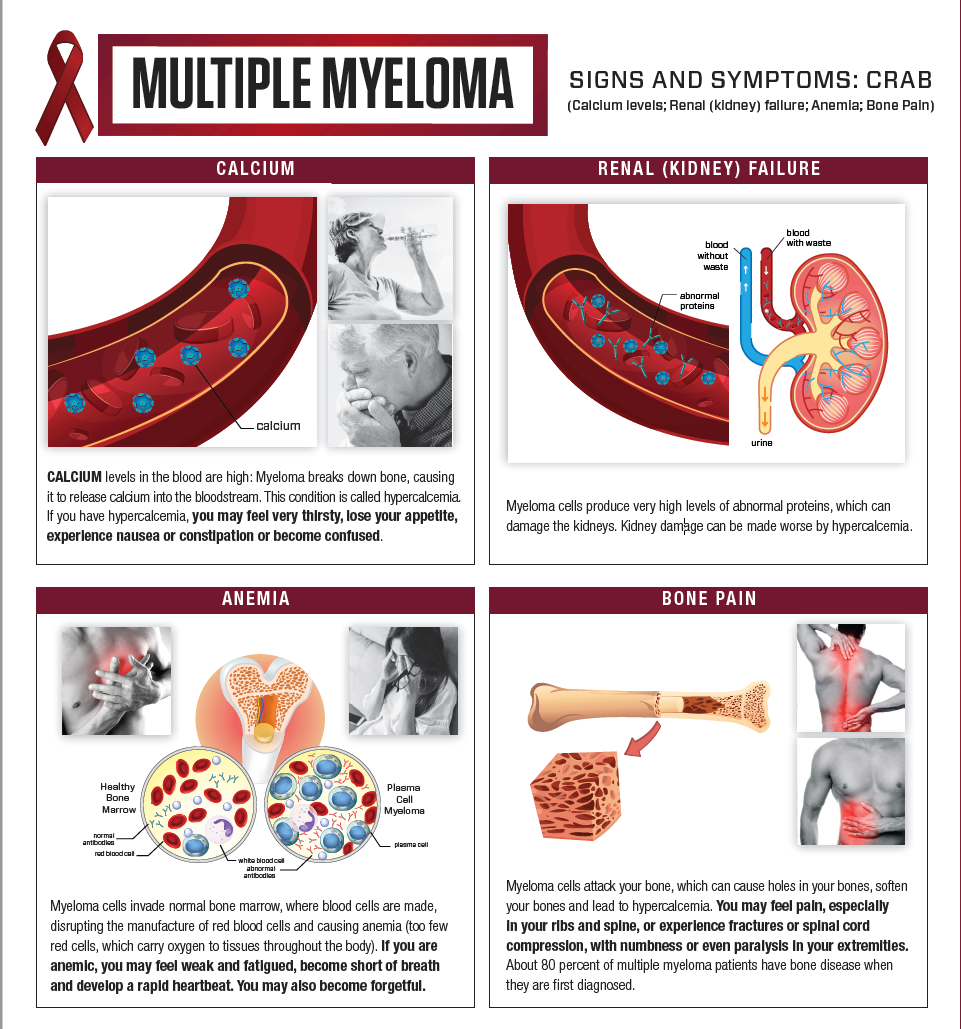Multiple myeloma occurs when plasma cells — a certain type of white blood cell — multiply out of control. When the body makes too many abnormal plasma cells, several conditions can develop, resulting in symptoms you may notice and signs that may appear in blood and urine tests.
Symptoms of multiple myeloma
- Fatigue and weakness due to anemia
- Easy bruising or bleeding
- Paleness
- Tingling or numbness in the fingers or toes
- Frequent infections and poor healing from infection
- Bone pain, usually in the back and ribs
- Broken bones, often in the spine
- Feeling very thirsty
- Weight loss
- Nausea or constipation
- Frequent urination, or no urination at all over a longer period of time
It is important to note that sometimes these symptoms can be due to other problems that are not related to cancer, so if you have any concerns, see your doctor right away for evaluation and testing.
What do the CRAB criteria mean?
The four most common signs of multiple myeloma are often referred to with the word, CRAB, an acronym for high calcium, renal failure, anemia, and bone pain. Having these four signs also may indicate that treatment should begin right away.
- Calcium levels in the blood are high. Myeloma breaks down bone, causing it to release calcium into the bloodstream. This condition is called hypercalcemia. If you have hypercalcemia, you may feel very thirsty, lose your appetite, experience nausea or constipation or become confused.
- Renal (kidney) failure. Myeloma cells produce very high levels of abnormal proteins, which can damage the kidneys. Kidney damage can be made worse by hypercalcemia. Read our blog about multiple myeloma and kidney failure.
- Anemia. Myeloma cells invade normal bone marrow, where blood cells are made, disrupting the manufacture of red blood cells and causing anemia (too few red cells, which carry oxygen to tissues throughout the body). If you are anemic, you may feel weak and fatigued, become short of breath and develop a rapid heartbeat. You may also become forgetful.
- Bone pain. Myeloma cells attack your bone, which can cause holes in your bones, soften your bones and lead to hypercalcemia. You may feel pain, especially in your ribs and spine, or experience fractures or spinal cord compression, with numbness or even paralysis in your extremities. About 80% of multiple myeloma patients have bone disease when they are first diagnosed.

